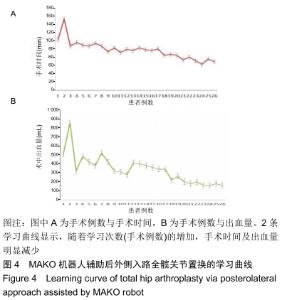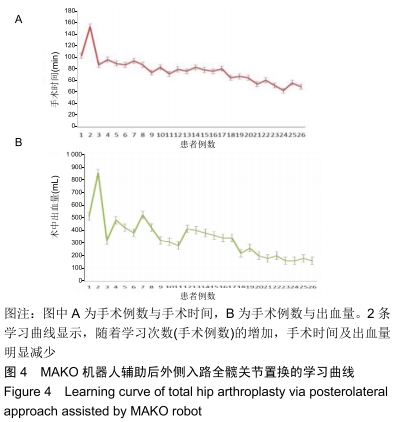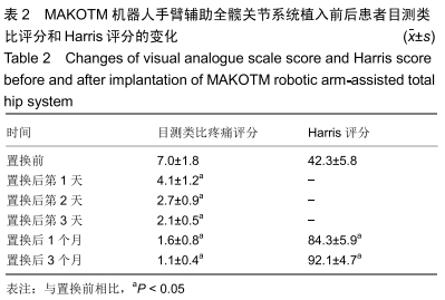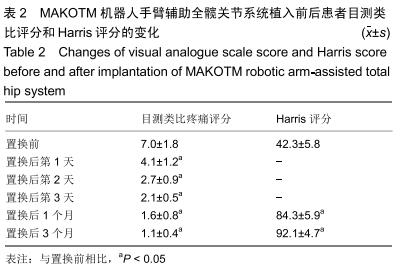| [1] |
Xiao Guoqing, Liu Xuanze, Yan Yuhao, Zhong Xihong.
Influencing factors of knee flexion limitation after total knee arthroplasty with posterior stabilized prostheses
[J]. Chinese Journal of Tissue Engineering Research, 2021, 25(9): 1362-1367.
|
| [2] |
Zhang Chong, Liu Zhiang, Yao Shuaihui, Gao Junsheng, Jiang Yan, Zhang Lu.
Safety and effectiveness of topical application of tranexamic acid to reduce drainage of elderly femoral neck fractures after total hip arthroplasty
[J]. Chinese Journal of Tissue Engineering Research, 2021, 25(9): 1381-1386.
|
| [3] |
Yuan Jiawei, Zhang Haitao, Jie Ke, Cao Houran, Zeng Yirong.
Underlying targets and mechanism of Taohong Siwu Decoction in prosthetic joint infection on network pharmacology
[J]. Chinese Journal of Tissue Engineering Research, 2021, 25(9): 1428-1433.
|
| [4] |
Chen Junming, Yue Chen, He Peilin, Zhang Juntao, Sun Moyuan, Liu Youwen.
Hip arthroplasty versus proximal femoral nail antirotation for intertrochanteric fractures in older adults: a meta-analysis
[J]. Chinese Journal of Tissue Engineering Research, 2021, 25(9): 1452-1457.
|
| [5] |
Wang Mengting, Gu Yanping, Ren Wenbo, Qin Qian, Bai Bingyi, Liao Yuanpeng.
Research hotspots of blood flow restriction training for dyskinesia based on visualization analysis
[J]. Chinese Journal of Tissue Engineering Research, 2021, 25(8): 1264-1269.
|
| [6] |
Li Chenjie, Lü Linwei, Song Yang, Liu Jingna, Zhang Chunqiu.
Measurement and statistical analysis of trabecular morphological parameters of titanium alloy peri-prosthesis under preload
[J]. Chinese Journal of Tissue Engineering Research, 2021, 25(4): 516-520.
|
| [7] |
Fan Yinuo, Guan Zhiying, Li Weifeng, Chen Lixin, Wei Qiushi, He Wei, Chen Zhenqiu.
Research status and development trend of bibliometrics and visualization analysis in the assessment of femoroacetabular impingement
[J]. Chinese Journal of Tissue Engineering Research, 2021, 25(3): 414-419.
|
| [8] |
Zhang Yu, Feng Shuo, Yang Zhi, Zhang Ye, Sun Jianning, An Lun, Chen Xiangyang.
Three-dimensional gait of patients with developmental dysplasia of hip undergoing total hip arthroplasty with high hip center
[J]. Chinese Journal of Tissue Engineering Research, 2021, 25(3): 350-355.
|
| [9] |
Cheng Shigao, , Wang Wanchun, Jiang Dong, Li Tengfei, Li Xun, Ren Lian.
Comparison of the standard and long-stem bone cement prosthesis replacement in the treatment of intertrochanteric fractures in elderly patients
[J]. Chinese Journal of Tissue Engineering Research, 2021, 25(3): 362-367.
|
| [10] |
Ma Rui, Wang Jialin, Wu Mengjun, Ge Ying, Wang Wei, Wang Kunzheng.
Relationship of pathogenic bacteria distribution with drug resistance and treatment cycle for periprosthetic joint infection after total joint arthroplasty
[J]. Chinese Journal of Tissue Engineering Research, 2021, 25(3): 380-385.
|
| [11] |
Lü Zexiang, Wu Jutai, Jiang Jian, Feng Xiao, Li Tengfei, Wang Yehua.
Effect of tranexamic acid combined with carbazochrome sodium sulfonate on blood loss and safety after total knee arthroplasty
[J]. Chinese Journal of Tissue Engineering Research, 2021, 25(3): 386-390.
|
| [12] |
Lu Yuyun, Huang Mei, Shi Xinlei, Chen Baoyan.
Bibliometric and visualization analysis of breast cancer stem cell literature from 2011 to 2020 based on Web of Science database
[J]. Chinese Journal of Tissue Engineering Research, 2021, 25(25): 4001-4008.
|
| [13] |
Cheng Chongjie, Yan Yan, Zhang Qidong, Guo Wanshou.
Diagnostic value and accuracy of D-dimer in periprosthetic joint infection: a systematic review and meta-analysis
[J]. Chinese Journal of Tissue Engineering Research, 2021, 25(24): 3921-3928.
|
| [14] |
Liu Jianyou, Jia Zhongwei, Niu Jiawei, Cao Xinjie, Zhang Dong, Wei Jie.
A new method for measuring the anteversion angle of the femoral neck by constructing the three-dimensional digital model of the femur
[J]. Chinese Journal of Tissue Engineering Research, 2021, 25(24): 3779-3783.
|
| [15] |
Qian Xuankun, Huang Hefei, Wu Chengcong, Liu Keting, Ou Hua, Zhang Jinpeng, Ren Jing, Wan Jianshan.
Computer-assisted navigation combined with minimally invasive transforaminal lumbar interbody fusion for lumbar spondylolisthesis
[J]. Chinese Journal of Tissue Engineering Research, 2021, 25(24): 3790-3795.
|



